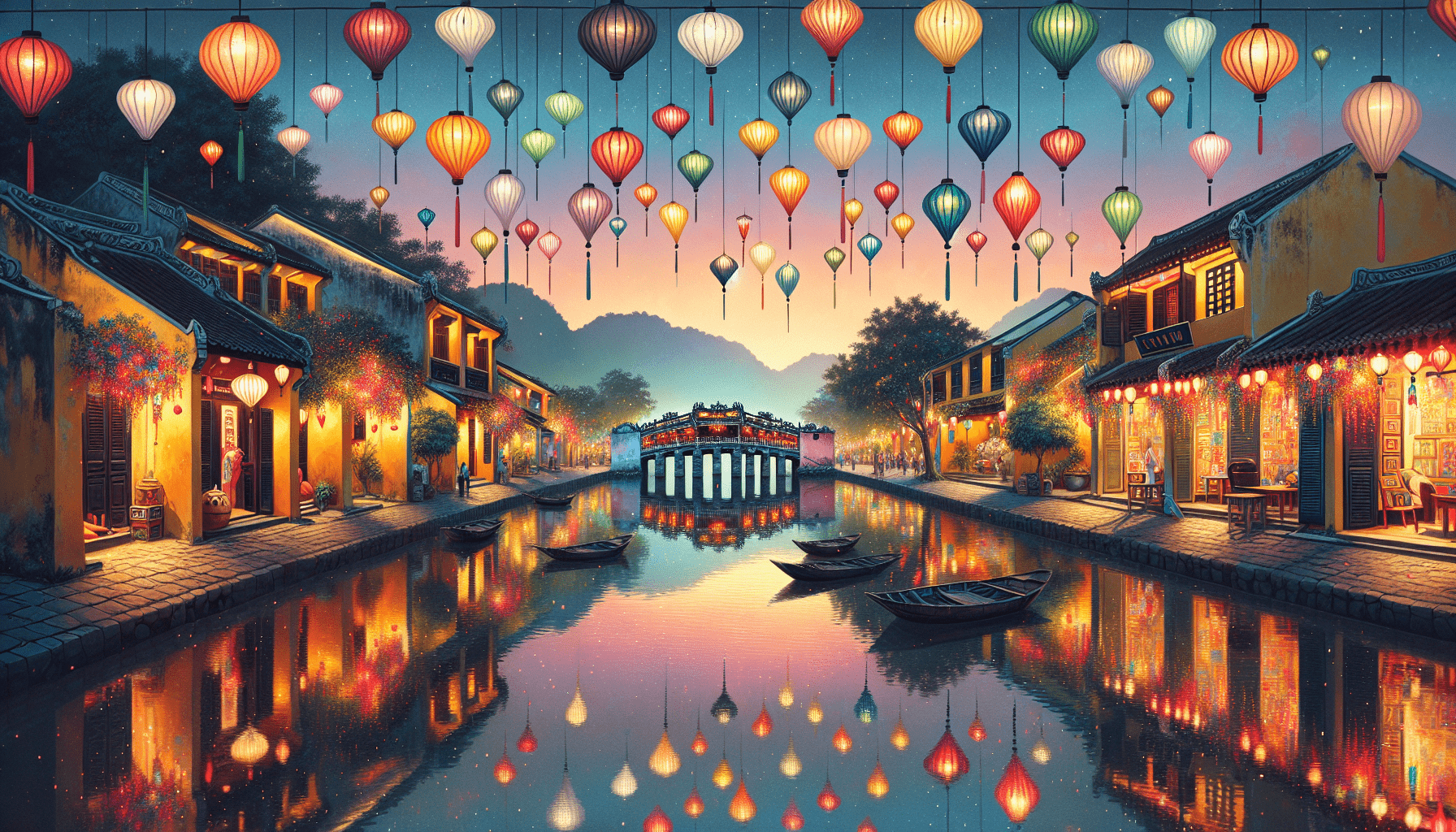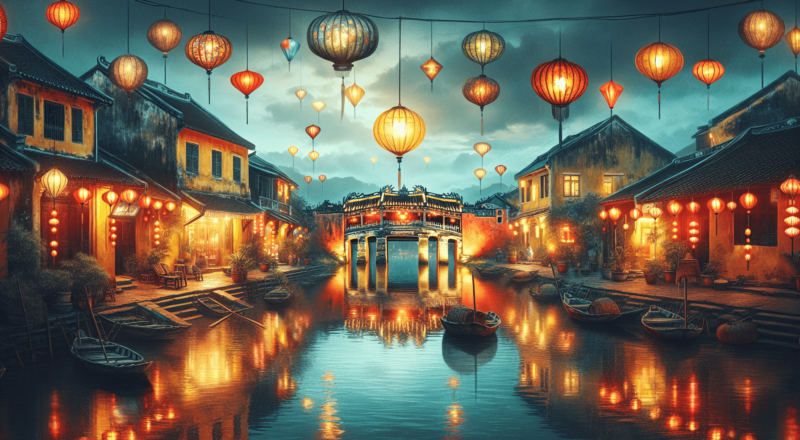Have you ever thought about the treasures of history that await you in Vietnam? This beautiful country is filled with stories that span thousands of years, showcasing its rich culture and diverse heritage. From ancient temples to colonial architecture, there’s so much to uncover. Let’s take a journey through some of the most popular historical sites in Vietnam that you won’t want to miss.
The Imperial City of Hue
Hue was once the capital of Vietnam during the Nguyen Dynasty from 1802 to 1945. The Imperial City is a UNESCO World Heritage site and stands as a testament to the grandeur and historical significance of this era.
Architecture and Design
When you step into the Imperial City, you’ll be greeted by majestic gates, intricate architecture, and a sprawling layout that tells tales of a bygone time. The walls, which are about two meters thick, encompass a vast area filled with palaces, temples, and gardens. Take your time to wander and appreciate the craftsmanship that has withstood the test of time.
Key Attractions within the Imperial City
-
The Citadel: This is the heart of Hue and the most significant part of the Imperial City. Its layout is inspired by Chinese architecture and symbolizes the importance of the emperor’s rule.
-
The Forbidden Purple City: Once reserved for the emperor and his family, this area is a poignant reminder of the past, showcasing the opulence that once existed.
-
Thien Mu Pagoda: Located by the Perfume River, this pagoda is an iconic symbol of Hue and offers stunning views that are perfect for photography.
My Son Sanctuary
Nestled in a lush valley, My Son Sanctuary is a collection of Hindu temples that date back to the Champa Kingdom. This site is a UNESCO World Heritage site and provides a glimpse into the spiritual life of the Cham people.
Architectural Significance
As you walk among the ruins, you’ll notice the intricate carvings and unique brickwork that illustrate the sophisticated engineering of the Cham civilization. Each temple tells a story, depicting deities and significant cultural symbols.
Visiting Tips
- Best Time to Visit: Early morning is ideal to avoid the heat and enjoy the tranquil atmosphere.
- Guided Tours: Consider taking a guided tour to better understand the history and symbolism in the ruins.
Cu Chi Tunnels
The Cu Chi Tunnels are a remarkable network of underground tunnels used during the Vietnam War. These tunnels played a crucial role in the Viet Cong’s resistance against American forces.
The Tunnel Complex
As you navigate through the Cu Chi Tunnels, you’ll find that they extend over 250 kilometers, with various levels connecting different areas. It’s fascinating to see how these tunnels included living quarters, storage facilities, and traps.
What to Expect
-
Guided Tours: Knowledgeable guides will explain the strategic importance of the tunnels and share stories from the war.
-
Interactive Experience: You can even crawl through sections of the tunnel to experience firsthand what life was like for the soldiers.
Ho Chi Minh City’s War Remnants Museum
The War Remnants Museum in Ho Chi Minh City is an eye-opening experience that chronicles Vietnam’s war history.
Collections and Exhibits
The museum showcases a myriad of exhibits, including photographs, military artifacts, and personal narratives that reflect the harsh realities of war. It’s an emotional but educational experience that helps you grasp the impact of the Vietnam War on the nation and its people.
Important Sections to Visit
- Aircraft Displays: Outside, you’ll find various military aircrafts, tanks, and artillery on display. It’s a striking visual representation of the war’s machinery.
- Interactive Displays: Take your time with the multimedia presentations that further enhance your understanding of this historical period.

Hoi An Ancient Town
Hoi An is a well-preserved example of a Southeast Asian trading port that dates back to the 15th century. This town is a mix of different architectural styles influenced by various cultures, and it’s another UNESCO World Heritage site.
The Charm of Hoi An
Walking through the lantern-lit streets of Hoi An feels like stepping into a different era. The town is famous for its narrow alleys, wooden buildings, and vibrant markets, all of which exude a charming and friendly atmosphere.
Notable Attractions in Hoi An
-
Japanese Covered Bridge: This iconic bridge is a beautiful photo spot and a significant symbol of Hoi An’s cultural fusion.
-
Old Town: The Old Town is characterized by its well-preserved buildings and shops selling traditional crafts, clothing, and food. You could easily spend the whole day wandering through the market stalls.
The Temple of Literature
Located in Hanoi, the Temple of Literature is dedicated to Confucius and is Vietnam’s first national university. Founded in 1070, it has become a place where students come to pray for academic success.
Architectural Splendor
The layout of the Temple reflects traditional Vietnamese architectural styles with its tranquil courtyards, pavilions, and the stunning lotus pond. It’s a serene place that encourages introspection and respect for education.
Key Features to Note
-
Stelae of Confucius: There are several stone stelae that commemorate the scholars who studied here. Each stele is inscribed with the names of graduates, making it a site of historical importance.
-
Ceremonial Areas: Be sure to visit the areas where ceremonies are still held today, highlighting the ongoing reverence for education and knowledge in Vietnamese culture.
Phong Nha-Ke Bang National Park
If you’re a nature lover, you will find Phong Nha-Ke Bang National Park to be an incredible site, known for its stunning limestone karsts and extensive caves. This UNESCO World Heritage site preserves some of the most impressive cave systems in the world.
Cave Exploration
One of the most popular caves to visit is the Paradise Cave, known for its immense size and breathtaking stalactites. The Son Doong Cave, the largest cave in the world, offers thrilling underground expeditions for the adventurous ones among you.
Why You Should Visit
-
Ecotourism: The park is not just about caves; it also hosts a rich biodiversity with unique flora and fauna, perfect for hiking and eco-tours.
-
Adventure Activities: Cab and trekking enthusiasts will find numerous opportunities to explore the region’s beauty.
The Reunification Palace
Located in Ho Chi Minh City, the Reunification Palace is a historic site that embodies the culmination of the Vietnam War. It served as the Presidential Palace during the Vietnam War and remains a symbol of reconciliation.
Historical Importance
You might be surprised to learn that this site was the location where the Vietnam War officially ended. The palace’s interior is preserved in its original condition, offering a glimpse into the life of the politicians who once governed from here.
What to See Inside
-
The Presidential Office: This grand space is where important meetings took place, complete with lavish decorations and historical artifacts.
-
Bunker: Don’t miss the chance to see the war bunker, which is a unique aspect of the palace, giving insight into the strategic operations during the war.
Ancient My Tho
Your journey wouldn’t be complete without visiting My Tho in the Mekong Delta, an area known for its lush landscapes and waterways. While it’s less known than other sites, its cultural significance is profound.
Culture and Lifestyle
In My Tho, you’ll have a chance to engage with local traditions, such as boat rides along the Mekong River and visits to traditional villages. It’s an authentic way to experience Vietnamese culture.
Activities to Enjoy
-
Boat Tours: Enjoy a leisurely boat ride on the river, exploring small islands and enjoying local cuisine.
-
Coconut Candy Factory: Visit a coconut candy factory to see how this delicious treat is made, and perhaps even sample some!
The Citadel of Saigon
The Citadel of Saigon, or the Saigon Old Citadel, is a fascinating historical site that reflects the colonial past of Vietnam. Its architecture offers insights into the fusion of European and local styles.
Significance of the Citadel
Although much of the original structure has changed, the remains tell stories of battles and defenses. Walk through the grounds to absorb the atmosphere of the region’s historical conflicts.
Highlights to Explore
-
Exhibits: Inside, you’ll find exhibits that highlight the history of Saigon and its strategic importance during colonial times.
-
Scenic Views: Climb up to the higher areas of the citadel for panoramic city views that blend the old with the new.
Conclusion
Each historical site in Vietnam tells a unique story, allowing you to glimpse the heart of the nation’s rich past. Whether it’s the ancient temples, the somber reminders of war, or the vibrant towns filled with culture, there’s an undeniable beauty in learning about the history that has shaped Vietnam today.
As you plan your visit, remember that these sites aren’t just landmarks; they are windows into the people who lived, loved, and fought for their country. Embrace the stories, honor the memories, and enjoy every moment of your journey through Vietnam’s incredible history. Whatever your interests, there’s an adventure waiting just for you.
